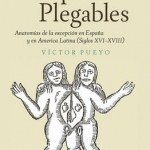Cuerpos Plegables: Anatomias de la Excepcion en Espana y en America Latina (Siglos XVI-XVIII)
BookThis item doesn’t have any media yet
2016 | Essays
Este libro explora la atraccion de los "Siglos de oro" por lo monstruoso. Varios trabajos recientes ya han arrojado luz sobre la abundante representacion de cuerpos excesivos que afloran en los siglos XVI y XVII y que parecen, acaso, reflejar el lenguaje inflado y deformado a traves del cual son descritos en la literatura de la epoca. Sin obviar sus logros, el libro intenta ir mas alla para mostrar que lo mas sorprendente de la monstruosidad en este periodo no es la manera en que representa un exceso barroco, sino la forma en que el exceso mismo esta estructurado en una imagen dual. Muchos de estos "monstruos" (hermafroditas, bicefalos o licantropos) ostentan un diseno geminado que permanece, de hecho, inexplicado. 'Que explica tal anomalia? 'Como contribuira esta excepcion a modelar la imagen misma de lo normal? 'Que tiene que ver con la configuracion del nuevo cuerpo politico a traves del cual las relaciones sociales iban a ser imaginadas, a partir de entonces, en el mundo occidental? Victor M. Pueyo es profesor titular en el Departamento de Espanol y Portugues de Temple University. This is a book about the obsession of the Spanish "Golden Age" with the monstrous.
Recent research has begun to cast light upon the abundant representation of excessive bodies that mirrors the swelled and deformed language through which they are depicted in early modern literature. Without disregarding its representational approach, the book goes beyond this body of research by arguing that the most surprising element about monstrosity in the sixteenth and seventeenth centuries is not the way it represents Baroque excess, but the way excess itself is structured into a dual image. Most of these "monsters" (hermaphrodites, lycanthropes, two-headed creatures) have a geminated form that remains, indeed, largely unaccounted. What explains such an anomaly? How will it shape the rule? What does it have to do with the configuration of the new body politic through which social relations were going to be imagined in the Western World? Victor Pueyo is associate professor in the Department of Spanish and Portuguese at Temple University.
Related Items:
| Published by | Boydell & Brewer Ltd |
| Edition | Unknown |
| ISBN | 9781855662902 |
| Language | N/A |
Images And Data Courtesy Of: Boydell & Brewer Ltd.
This content (including text, images, videos and other media) is published and used in accordance
with Fair Use.
